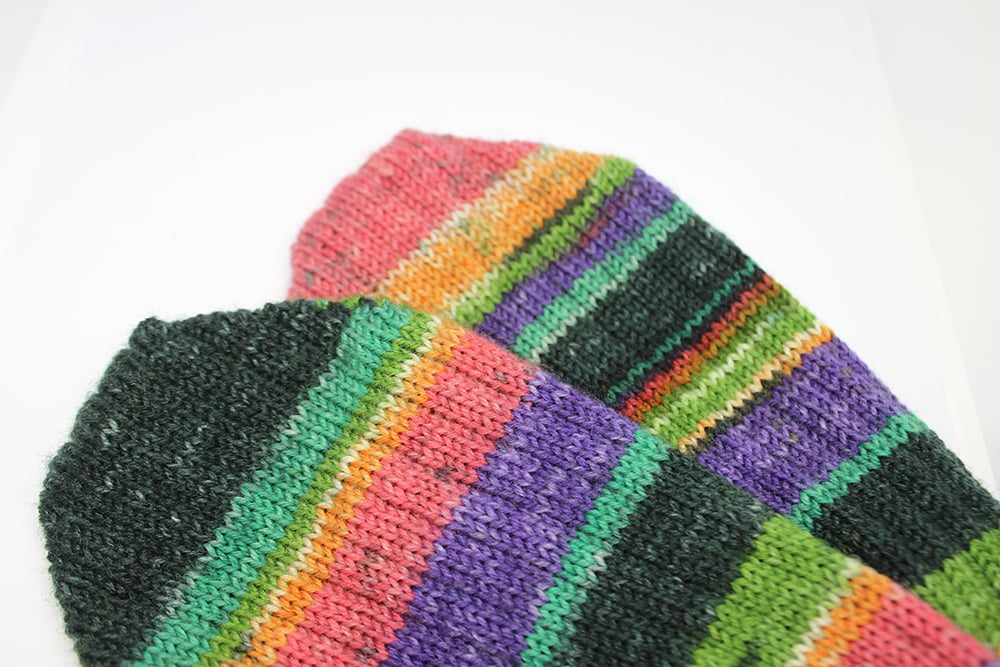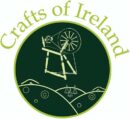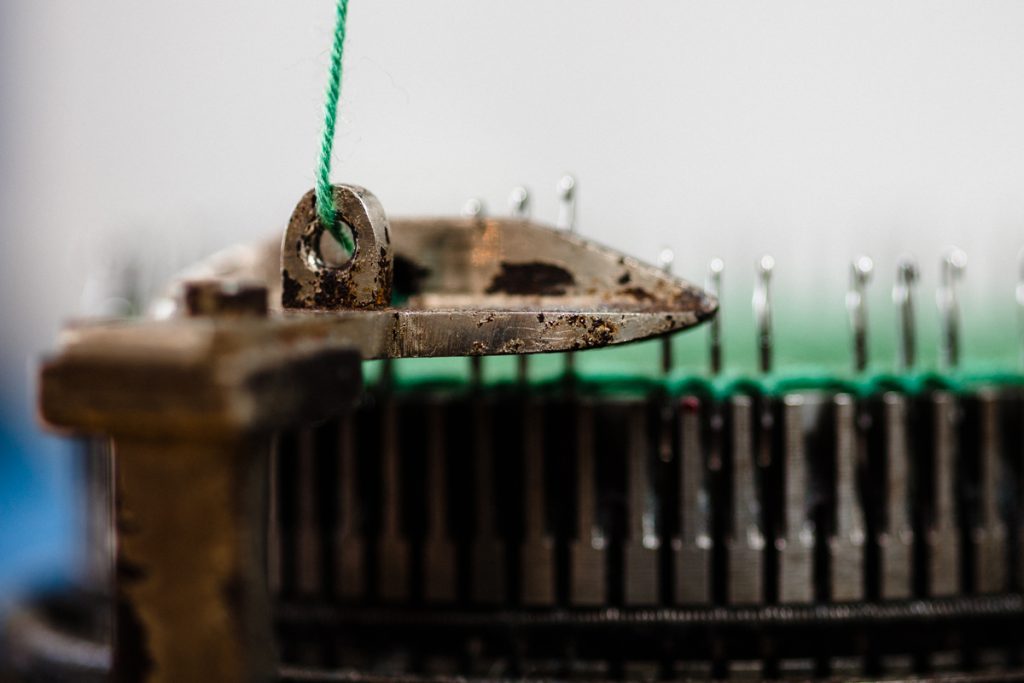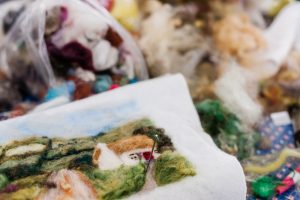Fascination… its the only word that I can think of that describes when I first discovered the existence of Circular Sock Knitting Machines (CSMs for short). As with most things in life this discovery was a happy accident. Those of you who know me or have met me through my live videos know I am not the sort to sit idle and that I carry my craft work with me where ever I go, dentist, hairdressers, it does not matter. A few years ago on a warm Sunday morning we headed off to Moynalty Steam Threshing Festival in our 1927 Model T Ford and the knitting came too, after a couple of hours walking through the exhibits I decided to head back to the car, rest my bones and pull out the project I was working on . While sitting there I was approached by a lovely gentleman who started talking to me about crafts and the wonderful old machine that was gifted to their Men’s Shed for restoration. I could tell him what the yarn swift was and that the sock shaped template was for blocking socks but I had never before heard of machines for knitting socks.
That evening poor Google got a scorching and I learned so much. These wonderful cast iron machines had an amazing history. Earliest mechanical knitting machines can be traced back as far as the 1500s but the invention of the first latch needles in the 1800s lead the way for the invention of a circular knitting machine as these needles could stand upright in a cylinder, the circular sock knitting machine was born. Further advancements were made by the invention of a ribber attachment by Henry Josiah Griswold in 1878. While researching I learned the significant role that these machines played during World War One. With soldiers marching long distances and standing in damp trenches the demand for socks was massive. At this time there was only one sock factory in the world and it was located in America so the role of making socks became community based. Groups of women got together and spent their time hand knitting socks, this was very labour intensive so the sock knitting machine became a very important part of the process, it earned the title of “the machine that helped to win the war”

The other interesting thing that I learned while researching sock knitting machines was their association with Lord Kitchener, Secretary of State for War during World War One. He is probably most famous for his recruitment posters but he was also responsible for the procurement of socks for the soldiers. He is credited with contributing the method of closing the toes of the socks, Kitchener Stitch, also known as grafting. This method produces a completely seam free sock that adds significantly to the wearers comfort. A method I had to master to produce socks to the same exacting standards
Armed with loads of knowledge about the history of sock knitting machines but not much information on how they worked I began my search for my first machine. When it arrived in a large cardboard box I looked inside with trepidation, what had I just got myself into? I examined each part, read the scant instruction manual and found the most amazing Facebook Group. Firstly I needed new needles, they can only be purchased in the USA, when they arrived the learning commenced. A full week of long evenings ensued before I managed to create something that resembled a sock, but how proud I was! It took plenty more practice to master the machine properly and be able to produce matching socks with properly closed toes, Alan was a very happy guinea pig for the early pairs that were produced. Soon we learned that these socks were extremely comfortable to wear, this being a result of the high wool count and the method of manufacturing. Eventually I was brave enough to offer socks for sale. Each pair of socks is made in our studio in Co Cavan using one of the ten machines that are now in our collection, the only working collection of sock knitting machines that can be viewed in Ireland. As the socks come off the machines they are checked and the toe lovingly closed by hand using Kitchener stitch. They are made to size, we don’t make size 4 to 7 we make sizes, 4, 5, 6, 7 etc, socks should fit properly. Alan and I continue to wear and test the socks I make, in our boots climbing mountains or for everyday wear we find nothing beats a properly made pair of wool socks and ours have history built into every stitch too. Check out our shop page to see what wonderful colours our socks come in.





